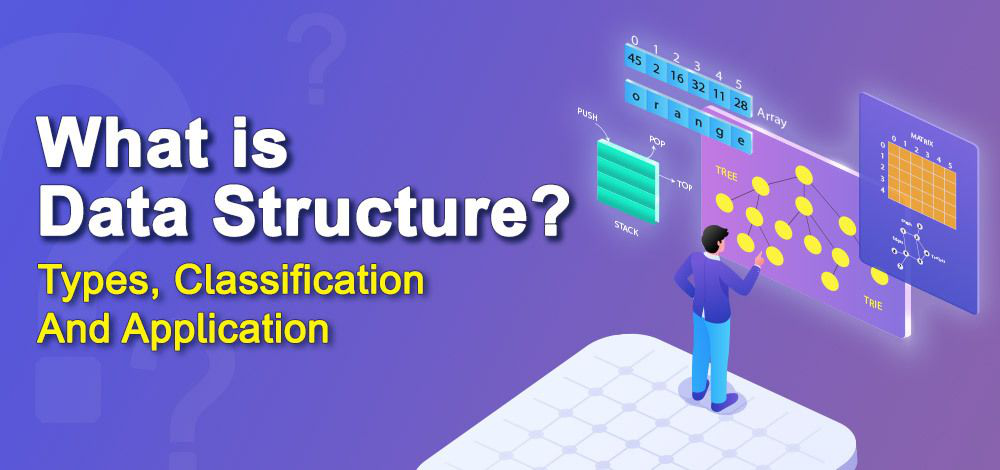What is Data Structure
A data structure is a storage that is used to store and organize data. It is a way of arranging data on a computer so that it can be accessed and updated efficiently.
A data structure is not only used for organizing the data. It is also used for processing, retrieving, and storing data. There are different basic and advanced types of data structures that are used in almost every program or software system that has been developed. So we must have good knowledge about data structures.
Data structures are an integral part of computers used for the arrangement of data in memory. They are essential and responsible for organizing, processing, accessing, and storing data efficiently. But this is not all. Various types of data structures have their own characteristics, features, applications, advantages, and disadvantages. So how do you identify a data structure that is suitable for a particular task? What is meant by the term ‘Data Structure’? How many types of data structures are there and what are they used for?

What is Data Structure: Types, Classifications, and Applications
We have got you covered. We have made a complete list of everything about what data structure is, what are the types of data structures, the classification of data structures, the applications of each data structure, and so on. In this article, we will discuss every aspect of each data structure to help you choose the best one in just minutes.
Characteristics
of a Data Structure
·
Correctness − Data structure implementation should
implement its interface correctly.
·
Time
Complexity − Running time or
the execution time of operations of data structure must be as small as
possible.
·
Space
Complexity − Memory usage of
a data structure operation should be as little as possible.
Need
for Data Structure
As applications are getting complex and data
rich, there are three common problems that applications face now-a-days.
·
Data
Search − Consider an
inventory of 1 million(106) items of a store. If the application is to
search an item, it has to search an item in 1 million(106) items every time slowing down the search. As data grows, search
will become slower.
·
Processor
speed − Processor speed
although being very high, falls limited if the data grows to billion records.
·
Multiple
requests − As thousands of
users can search data simultaneously on a web server, even the fast server
fails while searching the data.
To solve the above-mentioned problems, data
structures come to rescue. Data can be organized in a data structure in such a
way that all items may not be required to be searched, and the required data
can be searched almost instantly.
Execution
Time Cases
There are three cases which are usually used to
compare various data structure's execution time in a relative manner.
·
Worst
Case − This is the
scenario where a particular data structure operation takes maximum time it can
take. If an operation's worst case time is ƒ(n) then this operation will not
take more than ƒ(n) time where ƒ(n) represents function of n.
·
Average
Case − This is the
scenario depicting the average execution time of an operation of a data
structure. If an operation takes ƒ(n) time in execution, then m operations will
take mƒ(n) time.
·
Best
Case − This is the
scenario depicting the least possible execution time of an operation of a data
structure. If an operation takes ƒ(n) time in execution, then the actual
operation may take time as the random number which would be maximum as ƒ(n).
Basic
Terminology
·
Data − Data are values or set of values.
·
Data
Item − Data item refers
to single unit of values.
·
Group
Items − Data items that
are divided into sub items are called as Group Items.
·
Elementary
Items − Data items that
cannot be divided are called as Elementary Items.
·
Attribute
and Entity − An entity is
that which contains certain attributes or properties, which may be assigned
values.
·
Entity
Set − Entities of
similar attributes form an entity set.
·
Field − Field is a single elementary unit of
information representing an attribute of an entity.
·
Record − Record is a collection of field values
of a given entity.
·
File − File is a collection of records of the
entities in a given entity set.